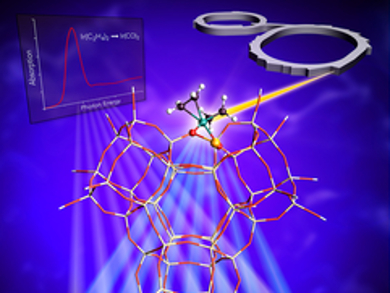Understanding reaction mechanisms is essential for the development of better catalysts. However, this is difficult to achieve for heterogeneous catalysts. Up until recently, only infrared (IR) spectroscopic techniques were used to elucidate the structure of catalyst surfaces.
Since then, more advanced X-ray absorption techniques have been used. These X-ray methods are able to excite electrons at the near-edge (X-ray absorption near edge structure, XANES) or the extended edge (extended X-ray absorption fine structure, EXAFS) of the electron ionization potential, which can give information about the structure of the material. However, resolution remains an unsolved issue, since only low energy beams can be used for techniques such as XANES.
David A. Dixon, University of Alabama, Tuscaloosa, USA, Simon R. Bare, Stanford Synchrotron Radiation Lightsource, SLAC National Accelerator Laboratory, Menlo Park, CA, USA, Bruce C. Gates, University of California, Davis, USA, and colleagues have found a solution to this problem. High-energy-resolution fluorescence detection (HERFD) allows a high-energy resolution to be used in the XANES excitation region. The team used the method to characterize ethylene and CO coordinated to an iridium complex on the surface of both MgO and zeolite supports.
The technique was able to detect a transition at the Ir LIII edge in the XANES region, thereby allowing the exchange of ethylene for CO to be confirmed in better resolution than typical XANES. According to the researchers, the approach could prove to be a powerful technique for catalyst characterization in the future.
- High-Energy-Resolution X-ray Absorption Spectroscopy for Identification of Reactive Surface Species on Supported Single-Site Iridium Catalysts,
Adam S. Hoffman, Dimosthenis Sokaras, Shengjie Zhang, Louise M. Debefve, Chia-Yu Fang, Alessandro Gallo, Thomas Kroll, David A. Dixon, Simon R. Bare, Bruce C. Gates,
Chem. Eur. J. 2017.
DOI: 10.1002/chem.201701459




